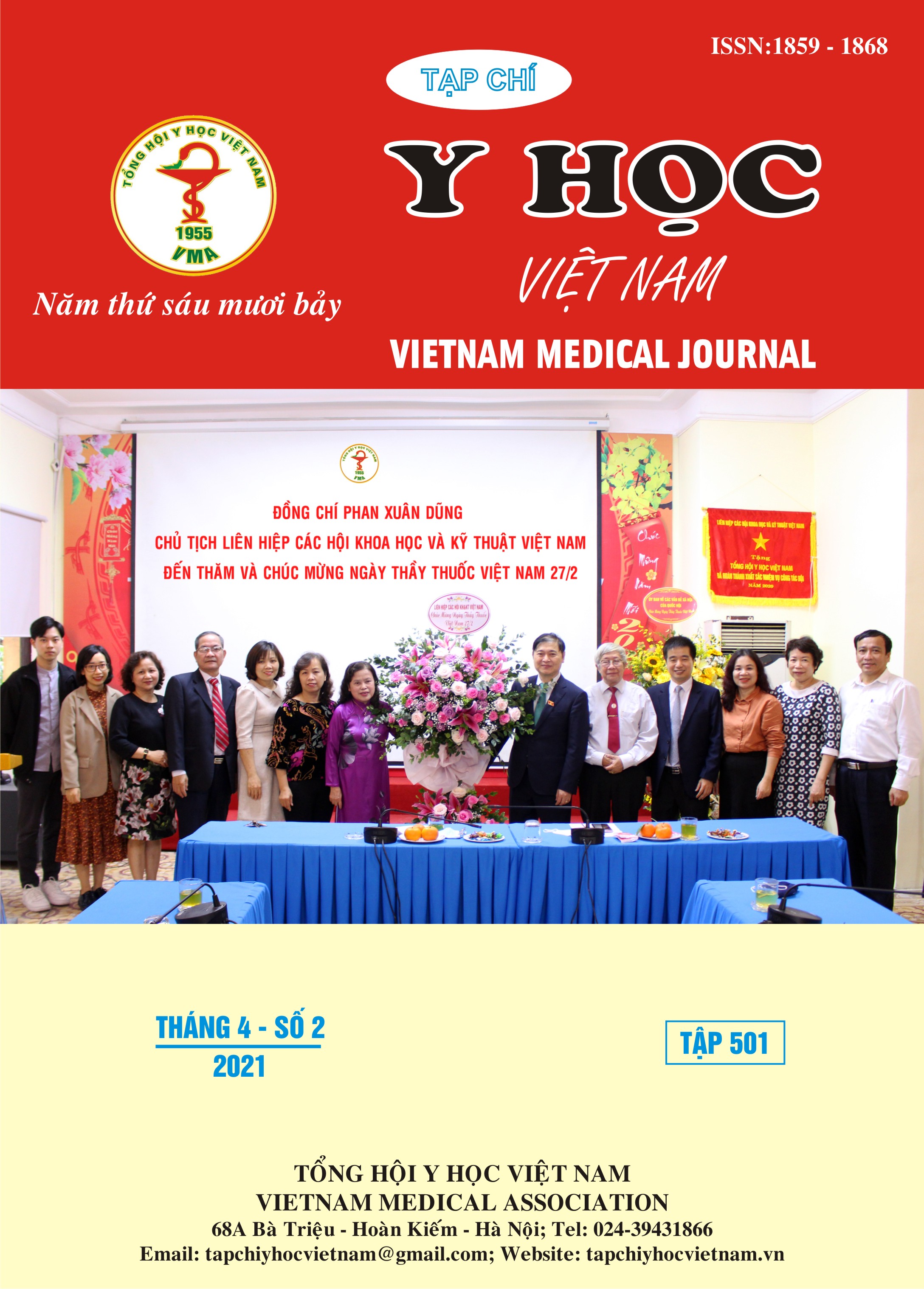EXPANDING THE DIMENSIONS OF FLAP, SUPERCHARGING AT DISTAL PART OF FLAP WAS THE NEW POWERFUL PROCEDURE
Main Article Content
Abstract
Purpose: To expand the dimension of flap, supercharging at distal part of flap was the new powerful procedure. Subjects and methods: 30 patients suffered from severe contructure scar in neck region were operated by using supercharged supraclavicular flap between 2014 and 2020. The thoracoacromial vessel was choiced to anatomosis at distal part after flap elevation. Results: All of flaps were survived completely, the maximum dimension of flap was 28cm in length and 25cm in width. Following up at 3 months postoperation, twenty-nine of the 30 patients were satisfied with both the functional and aesthetic results. All patients were satisfiedat 6 months after surgery. Conclusion: The supercharged supraclavicular flap was the optimized choice to reconstruct of neck region, especiallyfor severe defects after burn.
Article Details
Keywords
supraclavicular flap, supercharged supraclavicular flap
References
2.Lamberty B. (1979) The supra-clavicular axial patterned flap. British journal of plastic surgery.32(3): 207-212.
3.Pallua N., Machens H.-G., Rennekampff O.. et al (1997) The fasciocutaneous supraclavicular artery island flap for releasing postburn mentosternal contractures. Plastic and reconstructive surgery.99(7): 1878-1884; discussion 1885.
4.Lamberty B. (1982) The cutaneous arterial supply of cervical skin in relation to axial skin flaps. Anatomia Clinica.3(4): 317-324.
5.Vinh V. Q., Van Anh T., Ogawa R.. et al (2009) Anatomical and clinical studies of the supraclavicular flap: analysis of 103 flaps used to reconstruct neck scar contractures. Plastic and reconstructive surgery.123(5): 1471-1480.
6.Pallua N. and Noah E. M. (2000) The tunneled supraclavicular island flap: an optimized technique for head and neck reconstruction. Plastic and reconstructive surgery.105(3): 842-851.
7.Vũ Quang Vinh (2016), Nghiên cứu ứng dụng vạt da cân thượng đòn nối mạch vi phẫu tại đầu xa điều trị sẹo di chứng bỏng vùng cằm cổ, Đề tài cấp bộ Y tế.
8. Trần Vân Anh (2005), Nghiên cứu lâm sàng và điều trị sẹo di chứng bỏng vùng cằm- cổ, Luận án tiến sỹ y học, Học viện Quân Y.
9. Trần thiết Sơn (2004), “Một số nhận xét về vạt da cân thư¬ợng đòn áp dụng trong phẫu thuật tạo hình ”, TCNCYH 28 (2), tr.60-64


